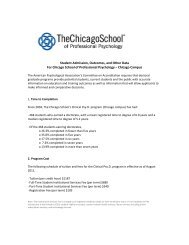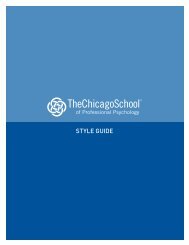Center for Academic Excellence Writing Assessment ... - eGo Main
Center for Academic Excellence Writing Assessment ... - eGo Main
Center for Academic Excellence Writing Assessment ... - eGo Main
Create successful ePaper yourself
Turn your PDF publications into a flip-book with our unique Google optimized e-Paper software.
The Atlantic Online | June 2009 | What Makes Us Happy? | Joshua Wolf Shenk<br />
12/31/09 10:15 PM<br />
VIDEO:<br />
Dr. George Vaillant shares insights from his decades of following the Grant Study men.<br />
Such bravado had defined the study from the start. Arlie Bock—a brusque, no-nonsense physician who grew up in Iowa and<br />
took over the health services at Harvard University in the 1930s—conceived the project with his patron, the departmentstore<br />
magnate W. T. Grant. <strong>Writing</strong> in September 1938, Bock declared that medical research paid too much attention to sick<br />
people; that dividing the body up into symptoms and diseases—and viewing it through the lenses of a hundred microspecialties—could<br />
never shed light on the urgent question of how, on the whole, to live well. His study would draw on<br />
undergraduates who could “paddle their own canoe,” Bock said, and it would “attempt to analyze the <strong>for</strong>ces that have<br />
produced normal young men.” He defined normal as “that combination of sentiments and physiological factors which in<br />
toto is commonly interpreted as successful living.”<br />
Bock assembled a team that spanned medicine, physiology, anthropology, psychiatry, psychology, and social work, and was<br />
advised by such luminaries as the psychiatrist Adolf Meyer and the psychologist Henry Murray. Combing through health<br />
data, academic records, and recommendations from the Harvard dean, they chose 268 students—mostly from the classes of<br />
1942, ’43, and ’44—and measured them from every conceivable angle and with every available scientific tool.<br />
Exhaustive medical exams noted everything from major organ function, to the measure of lactic acid after five minutes on a<br />
treadmill, to the size of the “lip seam” and the hanging length of the scrotum. Using a new test called the<br />
electroencephalograph, the study measured the electrical activity in the brain, and sought to deduce character from the<br />
squiggles. During a home visit, a social worker took not only a boy’s history—when he stopped wetting his bed, how he<br />
learned about sex—but also extensive medical and social histories on his parents and extended family. The boys interpreted<br />
Rorschach inkblots, submitted handwriting samples <strong>for</strong> analysis, and talked extensively with psychiatrists. They stripped<br />
naked so that every dimension of their bodies could be measured <strong>for</strong> “anthropometric” analysis, a kind of whole-body<br />
http://www.theatlantic.com/doc/print/200906/happiness<br />
Page 3 of 20





